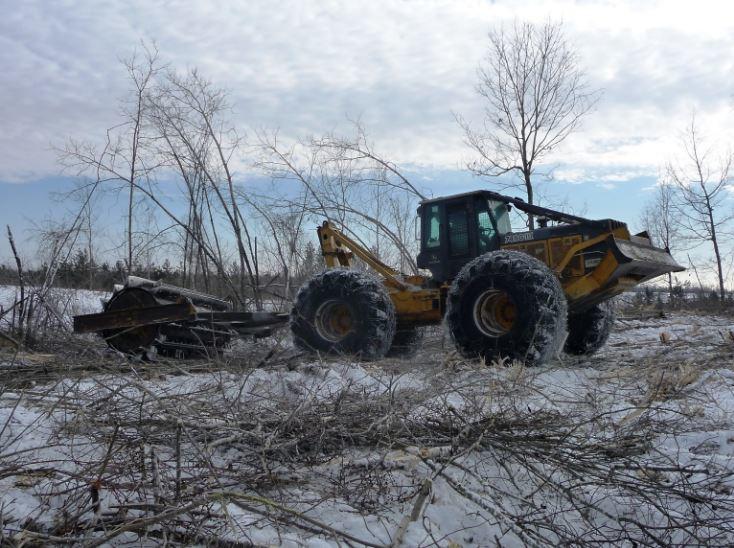Overview
A straight-line wind event impacted the St. Croix State Forest & State Park on July 1, 2011. The windstorm damaged 13,000 acres of mixed hardwood and aspen forest. The wind event not only damaged the mature stands of the forest, but impacted sub-merchantable stands of aspen and paper birch 1 to 5 inches in diameter. Some of these stands were left in a weakened state after being wind-whipped. These stands, if left untreated, would not recover and eventually would have succumbed to death. Brush and other less desirable species would have overtaken the area and decreased the quality and productivity of the stands.
Silviculture Objective(s)
To regenerate non-merchantable stands of aspen and paper birch, heavily damaged by a windstorm, back to vigorous and healthy stands, by using a roller chopper that is pulled by a skidder on frozen ground. Similar to a harvest, this treatment would set back the aspen component and promote suckering to regenerate the stand.
Pre-treatment stand description and condition
Pre-treatment species composition:
Wind-damaged aspen – paper birch with mixed hardwoods, one to five inches in diameter; 1,500 to 3,500 stems per acre.
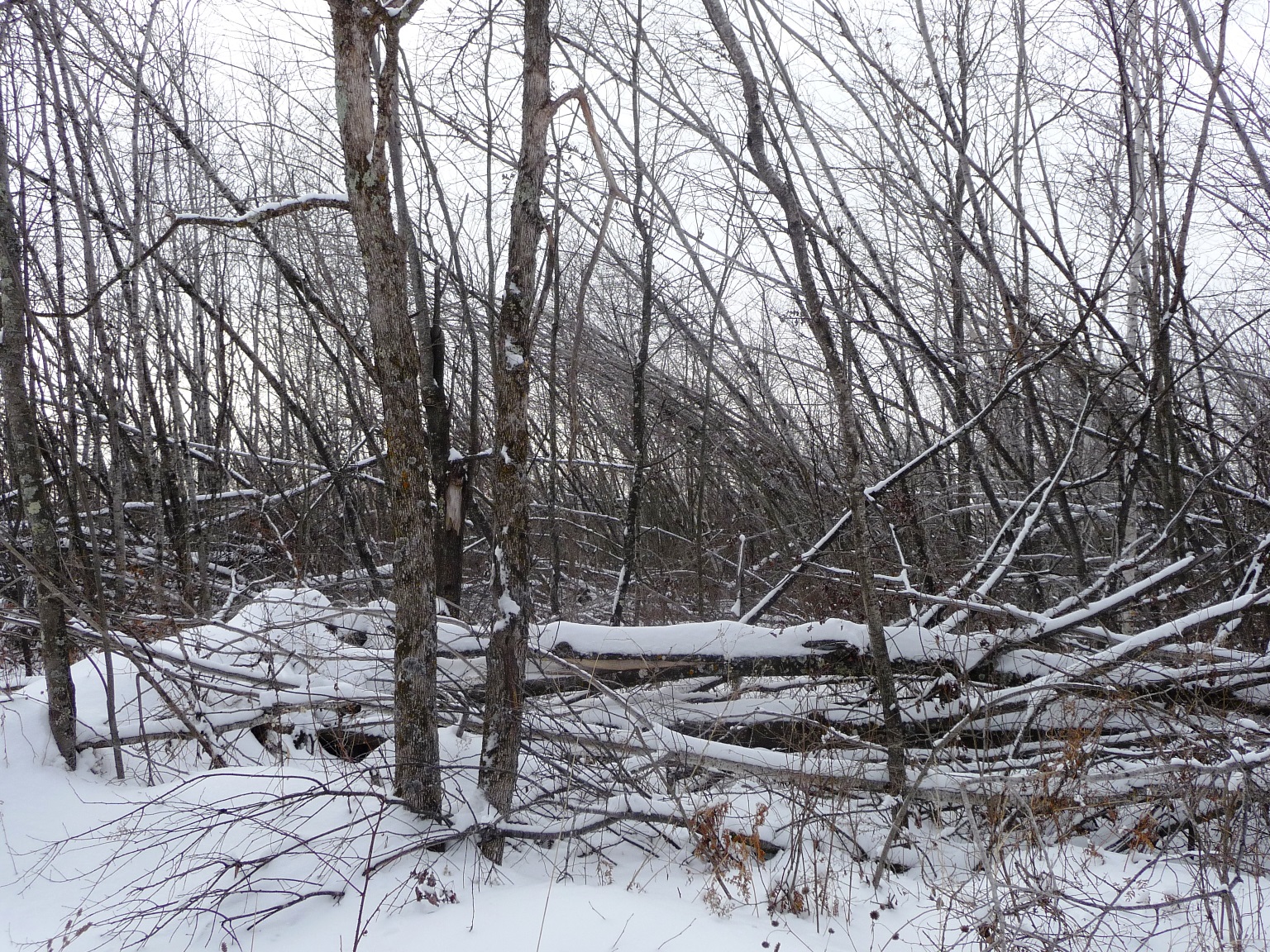
Figure 1: Wind-storm damage
Silviculture Prescription
Regenerate wind-damaged non-merchantable stands of aspen and paper birch by roller chopping, stimulating the root systems to re-sprout and sucker similar to harvesting mature timber.
What actually happened during the treatment
A roller chopper, a giant drum with articulating blades was pulled behind a JD Skidder with a blade attachment on the front which allowed the skidder to push down standing non-merchantable small diameter trees, which were severed and crushed by the roller chopper.
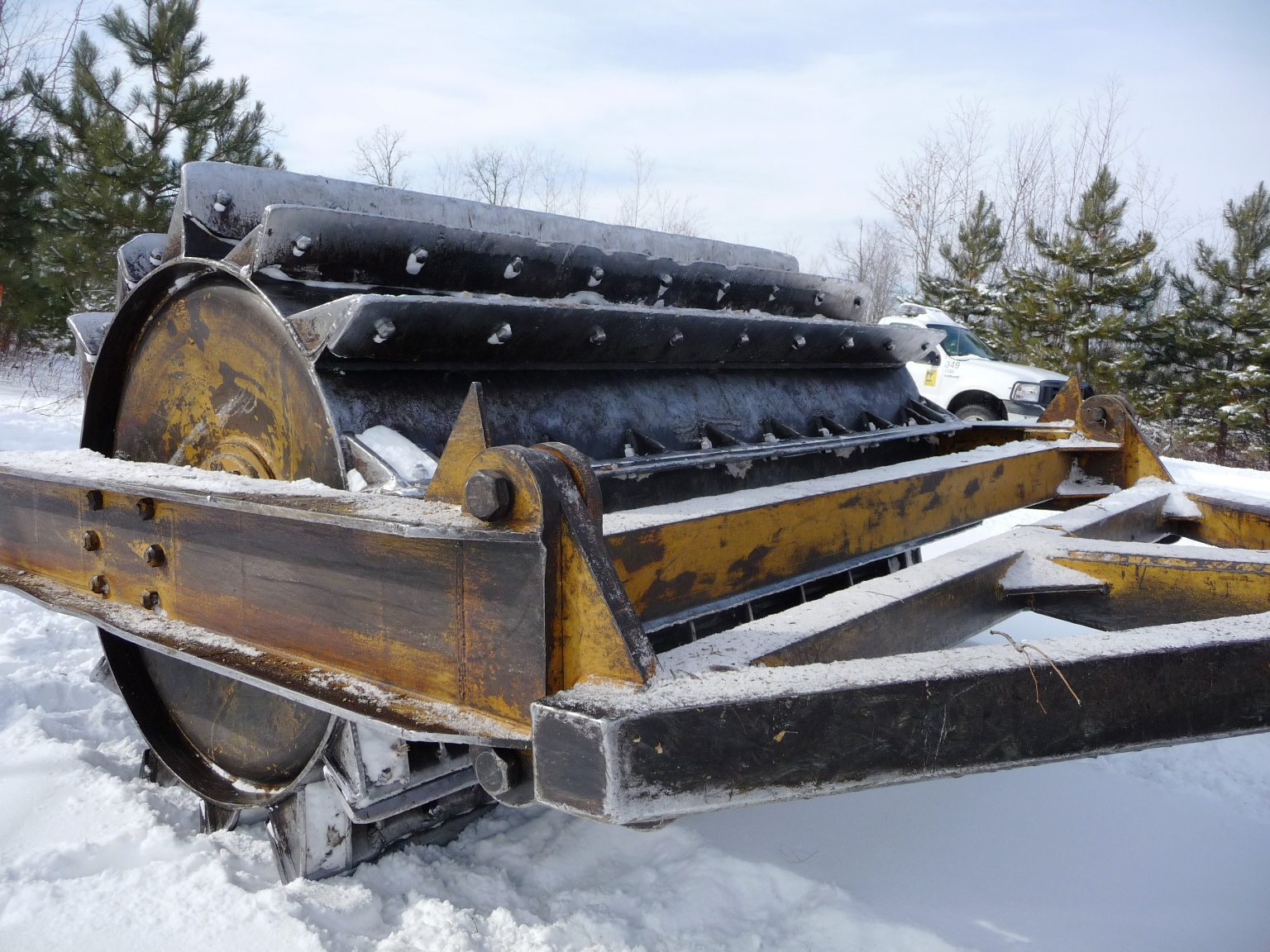
Figure 2: Close-up of Rollerchopper
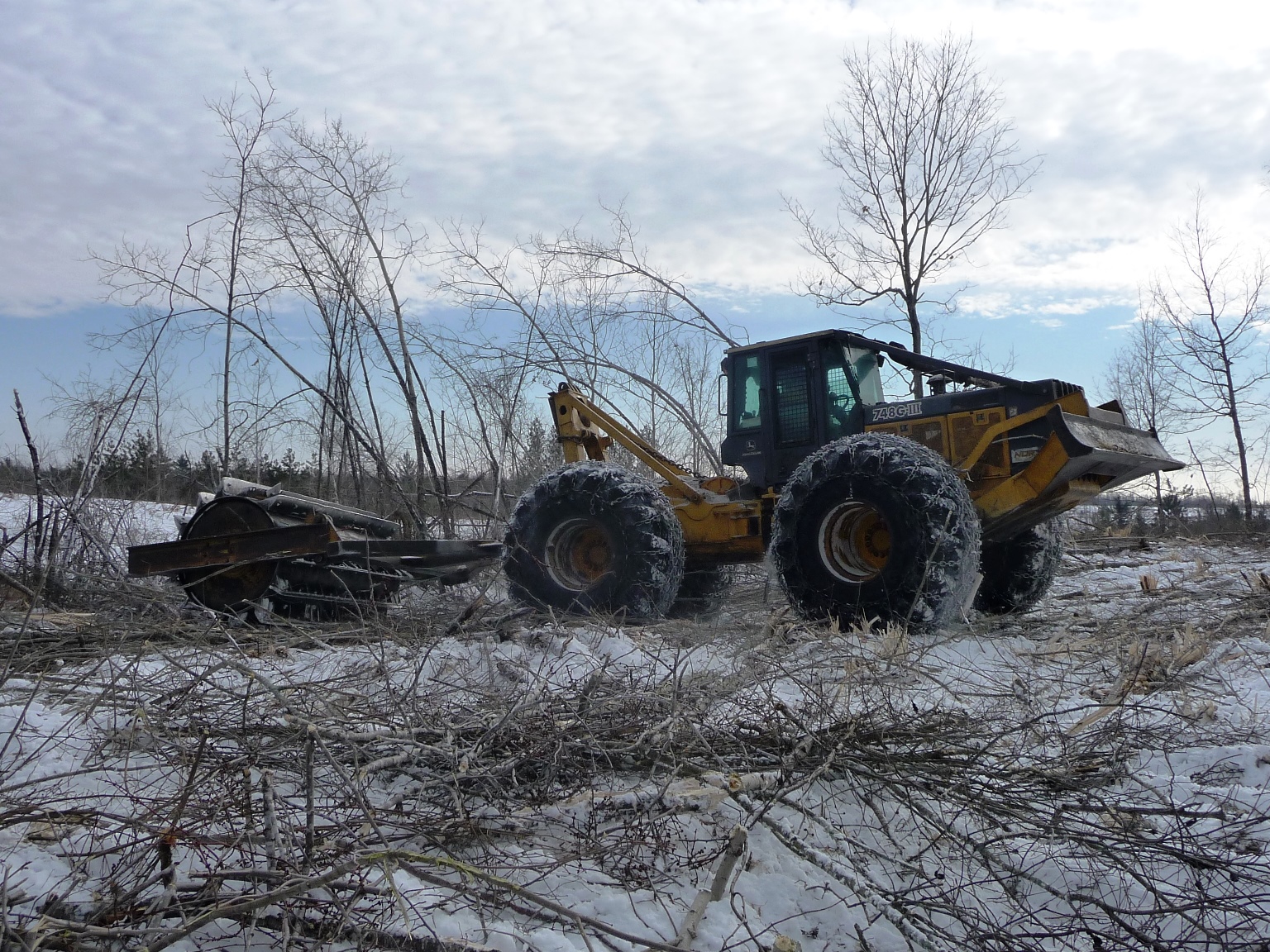
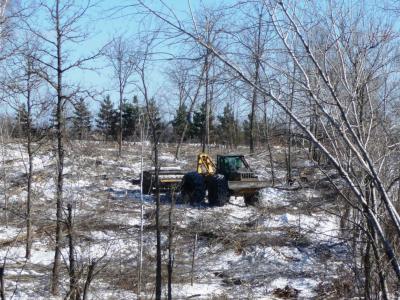
Figures 3 & 4: Rollerchopper in action
The objective for this site prep application was to treat with a roller-chopper sub-merchantable aspen & paper birch stands 3-7 inches in diameter damaged by the July 1st, 2011 windstorm event. The sites were prepped for natural regeneration of aspen, paper birch, maple, oak, and basswood, by pulling a 20,000 pound roller chopper with an articulating blade (high to low knife settings) behind a skidder over damaged trees.
The goal of this action was to open the ground to sunlight, and stimulate root suckering and stump sprouting. A single pass with the roller chopper over the site was sufficient. Project work was completed during the winter, when the ground was frozen, so as not to disturb the root systems or cause damage to wetter sites.
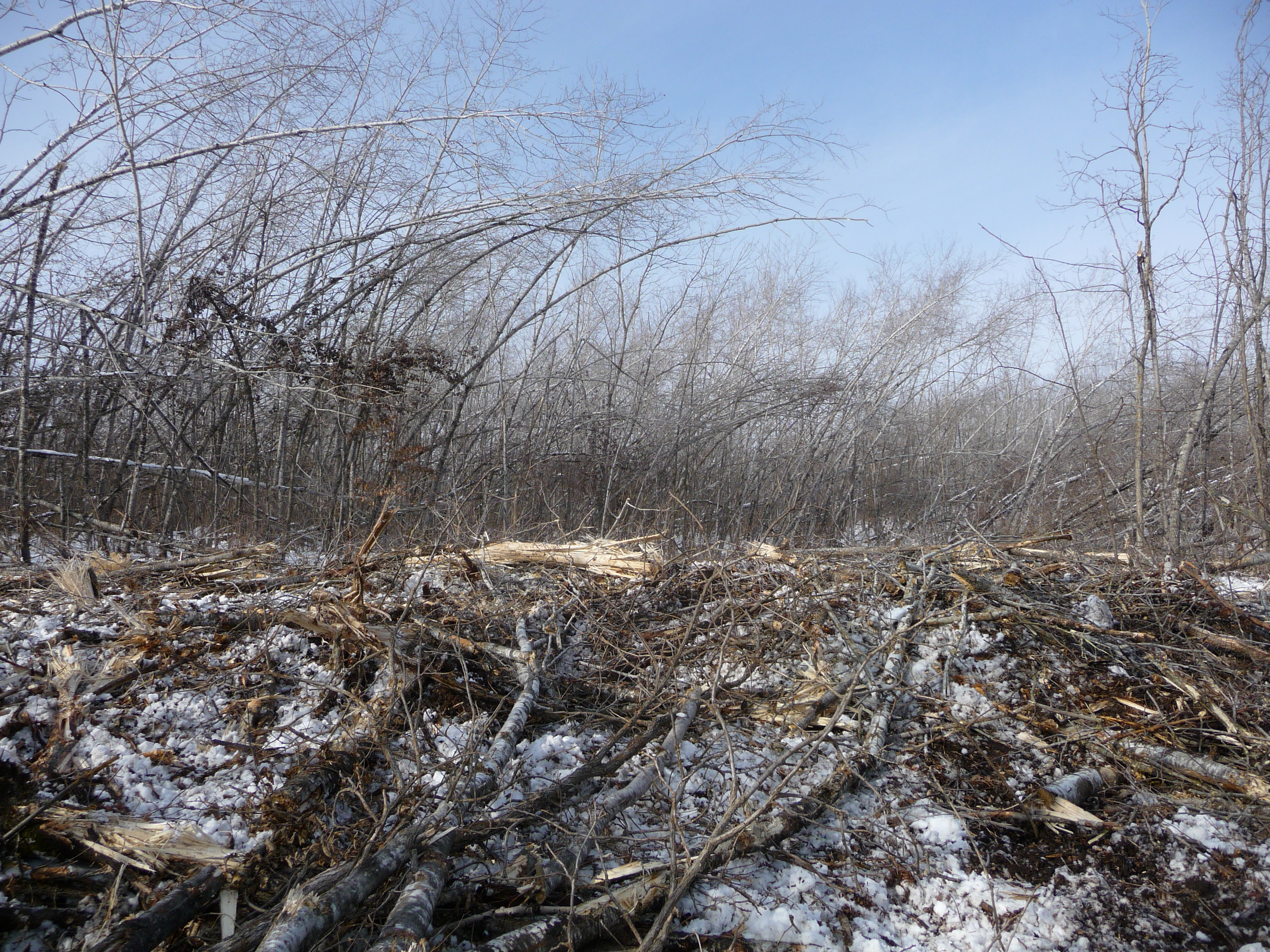
Figure 5: Stand conditions immediately following rollerchopping
Costs and economic considerations
Range from $90 to 100/acre (conducted during the winters of 2013 and 2015). Average actual cost was $92/acre.
Other notes
This kind of work should be undertaken when temperatures are 20 degrees or lower. Colder temperatures provide better conditions for chopping and breaking of the stems resulting in more effective site preparation.
Equipment used and future considerations:
- A roller chopper pulled behind a forest tree skidder at least the size of a JD748 or similar type prime mover with a minimum 200 horse power. Due to rough terrain, the prime mover must have a minimum wheelbase of 10ft wide.
- The roller chopper must weigh 20,000 pounds empty, be at least 10 ft. wide, AND have a high to low articulating knife setting.
- All fuel and other support supplies as needed.
- The prime mover used during the roller chopping application shall be equipped with a Global Positioning System (GPS) with the following capabilities:
- GPS system shall be capable of logging prime mover coordinates when roller chopping commences. The traversing system when turned on shall be capable of positional accuracy of 5 meters.
- The system shall be capable of logging data at the rate of at least once per second while chopping. The system should also allow for the instantaneous logging of area being treated when system is in off positions.
- The system shall include a moving map display located inside the cab of the prime mover.
- The system shall include a light bar or other visual track guidance indicator. The indicator shall be located so the operator can see the guidance information while looking through the forward windscreen.
- Real time differential correction capability must be activated during chopping operations. The GPS system shall be equipped with an indicator to show and to log the loss of signal for differential correction.
Summary / lessons learned / additional thoughts
Our current inventory showed us having 9,500 acres located on 208 stands of non-merchantable aspen and paper birch cover type. We had photography flown for storm damage in the St. Croix State Forest the fall of 2011. Using the newly flown aerial photography, we were able to pare down stands to be surveyed to 38 stands for 2,000 acres that needed to be checked for damage.
In setting up the site prep project, we used a helicopter to aerially survey approximately 2,000 acres on 38 stands for storm damage. Initially the stands were assigned in blocks individually to be field checked on the ground, which we were finding we didn’t have the time or resources to complete.
After the stands were aerial surveyed, we came back to the office, and made a determination based on a percentage of the stand that was damaged, whether the stand would be treated by roller chopping or not. We combined the damage stands into geographically local project working groups for contract. We had 10 projects covering 22 stands for 1,000 acres planned to be roller chopped.
The treatment occurred over three winters. The first winter, we did a trial test of a 100 acres on 5 stands, as there wasn’t enough funding to cover the 1,000 acres that were set up. We had ideal frozen ground conditions (winter of 2012-13). We treated the first tracts in February of 2012. This provided us an idea of what the equipment and operators abilities were to treat the damaged stands.
The following winter 2013-2014, we had heavy snow, but no frost in the ground. A contract was bid out for the next 900 acres. We were unable to see the treatment performed due to the lack of frost in the ground. We had the contract extended for one more year due to adverse weather conditions.
The winter of 2014-2015 found ideal conditions to treat these stands, and we began operations in mid-January. We ended up ground-truthing the stands as the contract got under way. This should have been done earlier in the process, prior to setting up the contract. There were areas of regen that were damaged, but untreatable due to the amount of merchantable timber which had fallen impacting, this and some topography issues as well. We ended up treating 13 stands for 353 acres.
The timing of using the roller chopper on frozen ground with little snow cover was effective. The roller typically is used to inhibit aspen regeneration when used in the spring and summer. The use of a roller chopper was found to be an effective method to regenerate aspen when used in the winter on frozen ground.
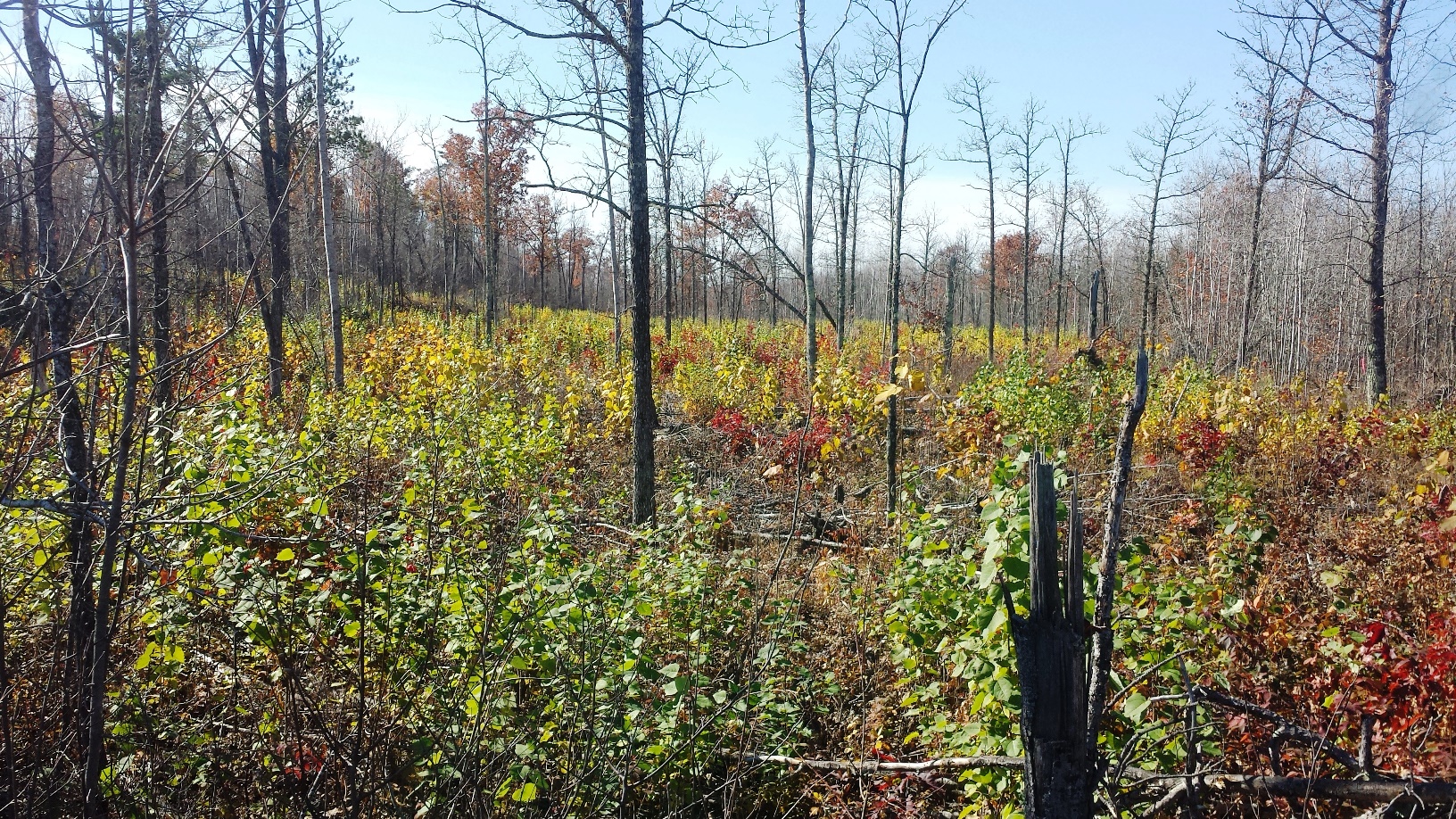
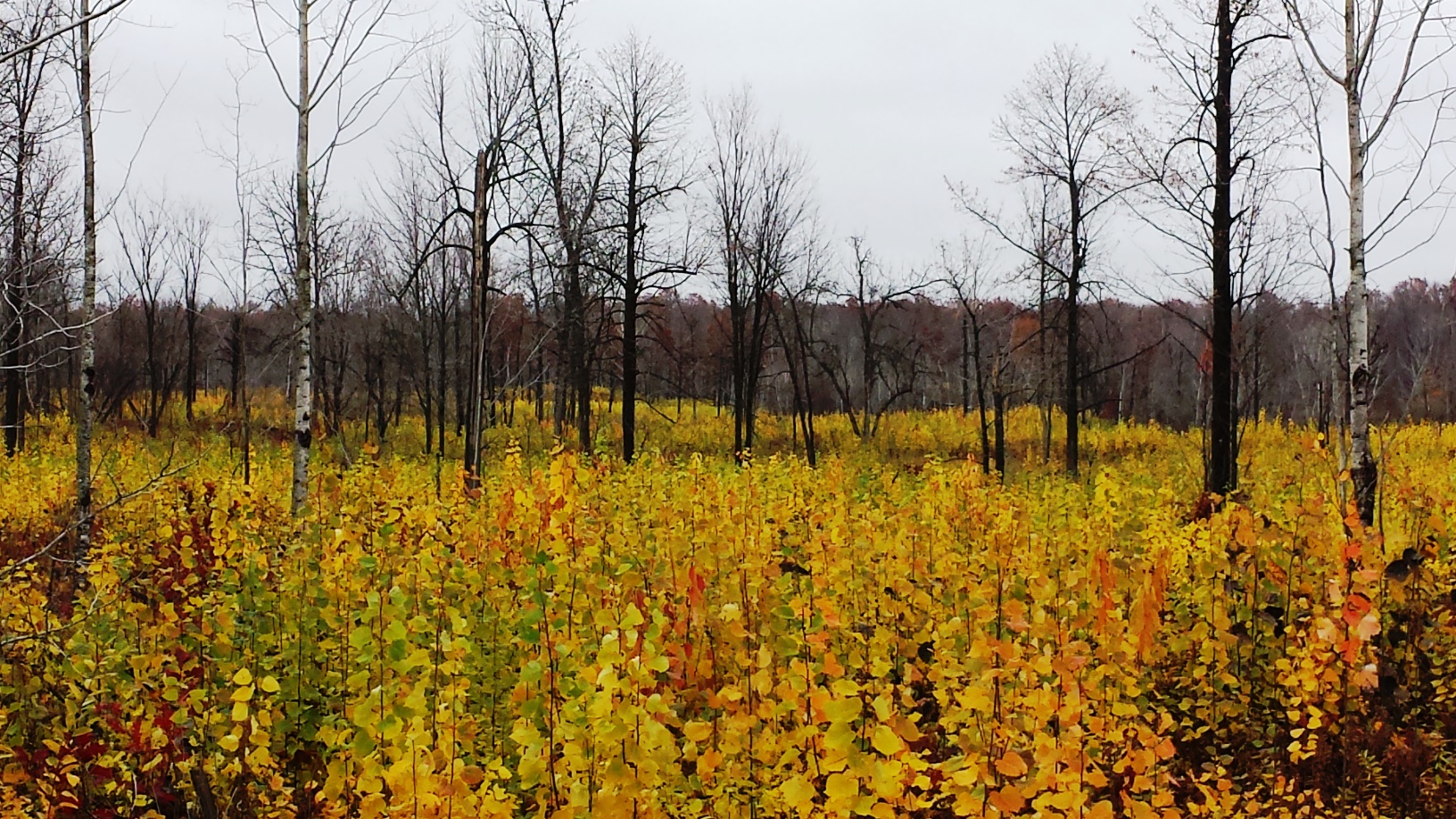
Figure 6 & 7: Rollerchopping results after one year
Funding, suitable weather conditions, experience, and timing all play a part of the whether the contract will be successful or not.
